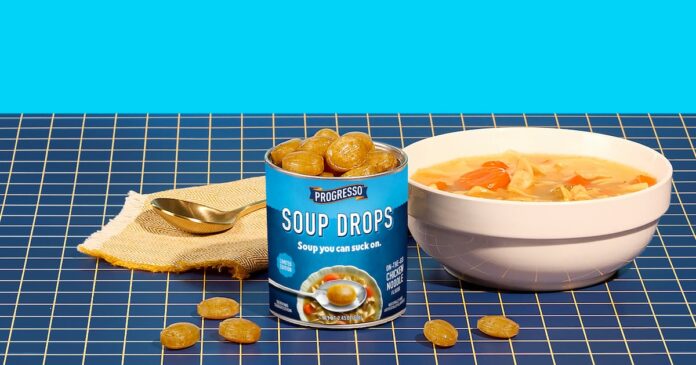In the competitive world of confectionery marketing, small and medium-sized enterprises (SMEs) often struggle to compete with larger companies that have the budget for high-profile advertising campaigns. However, there is one emerging tactic that is proving to be highly effective in capturing consumer attention in a saturated market: freakification.
Freakification involves the creation of unique and unusual products that stand out from the crowd and generate buzz among consumers. These products not only increase brand awareness but also drive sales by tapping into consumers’ desire for novelty.
One recent example of freakification is General Mills’ iconic Progresso brand launching a range of chicken noodle soup-flavored hard candy. Despite the unconventional combination of flavors, the product sold out within days of its launch, demonstrating the power of freakification in capturing consumer interest.
Similarly, Seattle-based candy and toy company Archie McPhee has built a strong online presence by offering weird and wacky flavors such as fried chicken, ketchup, and pickle in their candies. This commitment to novelty has set them apart in the market and attracted a loyal following.
Even larger consumer packaged goods (CPG) companies like Jelly Belly have embraced freakification with their Beanboozled range, which includes jelly beans with bizarre flavors like burnt rubber and barf. By tapping into consumers’ curiosity and sense of adventure, these companies have been able to create memorable and successful products.
However, freakification doesn’t always have to be about shocking or grossing out consumers. Iowa-based chocolatier Chocolate Storybook has found success with its hickory-smoked bacon wrapped in milk chocolate, which has become a core product in their collection. By combining unexpected flavors in a high-quality product, they have created a unique selling point that sets them apart from competitors.
Other companies around the world are also embracing the trend of freakification in their product development. UK brand Wild Thingz has launched a collection of quirky gummies with insect-themed flavors like Lemon Maggots and Cherry Spiders, while British brand The Chocolate Smiths offers chocolate bars inspired by famous desserts and complex flavor combinations.
Even well-known brands like Tic Tac and Hershey are getting in on the act, with Tic Tac inviting consumers to vote on new limited-edition flavors and Hershey launching a flavor-changing gum offering. By constantly innovating and pushing the boundaries of traditional confectionery, these companies are able to stay relevant and capture consumer interest in a crowded market.
In conclusion, freakification is a powerful marketing tactic that can help candy SMEs and larger CPG companies alike to differentiate themselves and stand out in a competitive market. By embracing novelty, creativity, and unexpected flavor combinations, companies can capture consumer attention, drive sales, and build a loyal customer base in an increasingly sophisticated confectionery industry.



